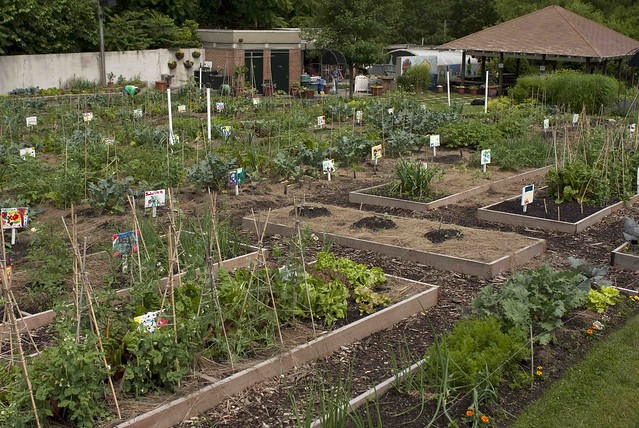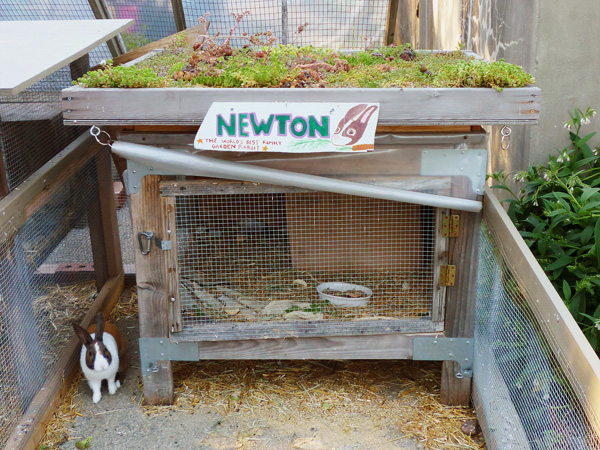The Ruth Rea Howell Family Garden: An Appreciation
Posted in Members on April 11 2011, by Sabrina Lee
| Sabrina Lee is an artist, community gardener, blogger, and NYBG Member. |
As a California native who was raised in the agricultural belt of that state, I never thought about food in terms of being local, seasonal, or sustainable. Local, in-season fruits and vegetables were always within reach; at roadside farm stands, and in my own backyard. Sustainable was another issue. My father cared for ten plus fruit trees in a backyard the size of ten parking spaces. Throughout my childhood, I plucked softball-sized oranges from our tree; I could not eat them faster than they fell. I later learned this was not a common childhood experience for most; I had no idea.

During my teaching days at a charter school here in New York City, I remember asking a student of mine casually, “What did you eat for breakfast?” She replied, “Chips and a soda.” She was in the seventh grade. This was not an uncommon answer among my students and that disturbed me. I do not believe it was a choice on their part to eat this way, but rather a matter of access. The school did not have any patches of green space (prior to leaving California, I had never heard the term, “green space”) designated for the students, and school lunches consisted mainly of processed foods. The closest businesses to the school were fast food establishments and a convenience store that sold products in the same category as my student’s breakfast. Like millions of other New Yorkers, my students did not have private or shared backyards, balconies, or terraces in their homes. Growing up in a city, this poses a very serious question for children, where will they learn about food?

The New York Botanical Garden is an oasis within the concrete neighborhood where it resides. The Ruth Rea Howell Family Garden is an oasis within that oasis. When I first entered the Family Garden, I instantly felt the participatory nature of the space and the imprint of the individuals who have gardened there: in the composting bins, the hanging dried gourds, and the hand painted signs with the names of the vegetables and the names of the young gardeners. This adds to the communal feeling. Food education is paramount to one’s well-being and sets the stage for one’s relationship to food for a lifetime. City children need the opportunity to nurture and grow their own food, and they need to be aware of how their food is grown for them. When you cultivate and care for a garden, your appreciation for food is heightened. The physical labor becomes knowledge in your body. The Family Garden provides city children an opportunity to participate in the full cycle of growing food: sowing seeds, transplanting seedlings, maintaining a garden, harvesting the bounty, collecting seeds, and composting. Children not only gain knowledge and empowerment, but they also gain the sensory experience of working with their hands. It is a wonderful place to visit; I wish I were one of the two rabbits, Darwin and Newton that live there, preferably Newton, his hutch has a succulent rooftop.
Are you a NYBG Member or visitor who would like to share your experiences at the Garden like Sabrina? Consider writing a blog post for Plant Talk! Learn more.
